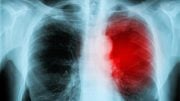
Evening physical activity may significantly decrease health risks for individuals with obesity, including premature death and cardiovascular issues, according to a University of Sydney study. Credit: SciTechDaily.com
Physical activity in the evening linked to greater health benefits for people with obesity.
Undertaking the majority of daily physical activity in the evening is linked to the greatest health benefits for people living with obesity, according to researchers from the University of Sydney, Australia who followed the trajectory of 30,000 people over almost 8 years.
Using wearable device data to categorize participant’s physical activity by morning, afternoon or evening, the researchers uncovered that those who did the majority of their aerobic moderate to vigorous physical activity– the kind that raises our heart rate and gets us out of breath– between 6 pm and midnight had the lowest risk of premature death and death from cardiovascular disease.
Importance of Evening Physical Activity
The frequency with which people undertook moderate to vigorous physical activity (MVPA) in the evening, measured in short bouts up to or exceeding three minutes, also appeared to be more important than their total amount of physical activity daily.
The study, led by researchers from the University’s Charles Perkins Centre was published on April 10 in the journal Diabetes Care.
“Due to a number of complex societal factors, around two in three Australians have excess weight or obesity which puts them at a much greater risk of major cardiovascular conditions such as heart attacks and stroke, and premature death,” said Dr. Angelo Sabag, Lecturer in Exercise Physiology at the University of Sydney.
“Exercise is by no means the only solution to the obesity crisis, but this research does suggest that people who can plan their activity into certain times of the day may best offset some of these health risks.”
Study Insights and Methodology
Smaller clinical trials have shown similar results, however, the large scale of participant data in this study, the use of objective measures of physical activity and hard outcomes, such as premature death, makes these findings significant.
Joint first author Dr. Matthew Ahmadi also stressed that the study did not just track structured exercise. Rather researchers focused on tracking continuous aerobic MVPA in bouts of 3 minutes or more as previous research shows a strong association between this type of activity, glucose control, and lowered cardiovascular disease risk compared with shorter (non-aerobic) bouts.
“We didn’t discriminate on the kind of activity we tracked, it could be anything from power walking to climbing the stairs, but could also include structured exercise such as running, occupational labor or even vigorously cleaning the house,” said Dr. Ahmadi, National Heart Foundation postdoctoral research fellow at the Charles Perkins Centre, University of Sydney.
While observational, the findings of the study support the authors’ original hypothesis, which is the idea – based on previous research – that people living with diabetes or obesity, who are already glucose intolerant in the late evening, may be able to offset some of that intolerance and associated complications, by doing physical activity in the evening.
Study Participants and Procedures
The researchers used data from UK Biobank and included 29,836 adults aged over 40 years of age living with obesity, of whom 2,995 participants were also diagnosed with Type 2 diabetes.
Participants were categorized into morning, afternoon of evening MVPA based on when they undertook the majority of their aerobic MVPA as measured by a wrist accelerometer worn continuously for 24 hours a day over 7 days at study onset.
The team then linked health data (from the National Health Services and National Records of Scotland) to follow participants’ health trajectory for 7.9 years. Over this period they recorded 1,425 deaths, 3,980 cardiovascular events, and 2,162 microvascular dysfunction events.
To limit bias, the researchers accounted for differences such as age, sex, smoking, alcohol intake, fruit and vegetable consumption, sedentary time, total MVPA, education, medication use, and sleep duration. They also excluded participants with pre-existing cardiovascular disease and cancer.
The researchers say the length of the study follow-up and additional sensitivity analysis bolster the strength of their findings however, due to the observational design, they cannot completely rule out potential reverse causation. This is the possibility that some participants had lower aerobic MVPA levels due to underlying or undiagnosed disease.
Significance and Future Research
Professor Emmanuel Stamatakis, Director of the Mackenzie Wearables Research Hub at the Charles Perkins Centre and senior author on the paper, said the sophistication of studies in the wearables field is providing huge insights into the patterns of activity that are most beneficial for health.
“It is a really exciting time for researchers in this field and practitioners alike, as wearable device-captured data allow us to examine physical activity patterns at a very high resolution and accurately translate findings into advice that could play an important role in health care,” said Professor Stamatakis.
“While we need to do further research to establish causal links, this study suggests that the timing of physical activity could be an important part of the recommendations for future obesity and Type 2 diabetes management, and preventive healthcare in general.”
Reference: “Timing of Moderate to Vigorous Physical Activity, Mortality, Cardiovascular Disease, and Microvascular Disease in Adults With Obesity” by Angelo Sabag, Matthew N. Ahmadi, Monique E. Francois, Svetlana Postnova; Peter A. Cistulli, Luigi Fontana and Emmanuel Stamatakis, 10 April 2024, Diabetes Care.
DOI: 10.2337/dc23-2448
This research was conducted using the UK Biobank resource under application 25813. This study was funded by an Australian National Health and Medical Research Council Investigator Grant and the National Health Foundation of Australia Postdoctoral Fellowship. The authors have no potential conflicts of interest to report.









There’s little money in doing studies like this, but it can help society. That is a very significant difference in hazard ratios. There is little detail in this study; a supplemental PDF they provide has more information, but mainly diagrams of results. I may be reading the graphs wrong, but longer durations of exercise increased the risk of all-cause mortality for the obese non-diabetics? For some graphs, the uncertainty margin is literally off the charts. It found diminishing returns after 35 minutes of daily exercise. This study could use repeating.
Greetings to the great scientists of America and NASA who share their information and discoveries with the world. In Iran, we don’t have interesting sites like this site, and in Iran, most scientific sites and even games are filtered. At all people should go to foreign sites and most of them cannot go. I searched a lot until I found this interesting site. I have been in Iran for more than forty years about astronomy, astronomy, geology and other scientific fields. I am researching and studying. The article that I want to send tonight from Iran on this site is related to the effects of human life in the seas and land of the earth a hundred million years ago, which were created by humans before us. All continents and some seas on earth. Humans who lived on earth a hundred million years ago in the form of mammals, humans and birds. The North American continent is a bird whose left wing is in northeastern Alaska, which is fragmented and separated from it. each other or its meteorites. The left wing of this bird is fragmented or the humans themselves made it this way when making the shape of this bird. The right wing of this bird belongs to Alaska. The foot of this bird is on the continent of South America. The bird is in the east of Central America and its mouth is open and there is a fish in its mouth, its eye is the sea. In East Central America, South America, it is the face and head of an old man. A man whose head is slightly down and his gaze is towards the east. His face is Brazilian and there are feathers around his face, neck and ears. Peru has feathers on its ears that are exactly feather shaped. Paraguay is a country with red cheeks. It extends from the chest to the lower abdomen, and the abdomen is near the sea of the heart. The continent of Africa is the head of a mammal that has horns, and the African horn is considered a horn. A rhinoceros on the face and forehead of this animal in the northwest of the continent. Australia is an island that is exactly in the shape of a dinosaur. It is located east of the Philippines and Indonesia. This island of Guinea and Papua is like a dinosaur with its mouth open and facing west. May God protect you everywhere, I changed it in the hope of meeting Dr. Mehrdad in Tehran, but the words and composition of the sentences have been damaged. Kohen Jahan, poet and author of Wadian astrology books, hoping to meet God, protect him. Leave a comment